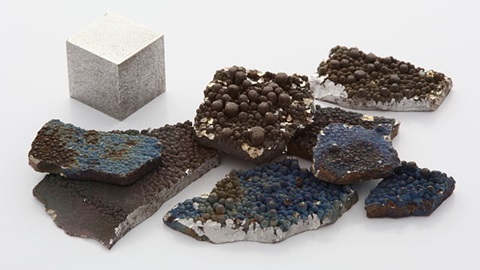BHP’s Decarbonization Strategy in Chile
By Gaia Research Team.
The Gaia Research Team specializes in sustainable mining investments, focusing on responsible resource extraction. Committed to transparency and innovation, the Team aims to transform the mining sector into a more sustainable industry that benefits both the economy and the planet while addressing the huge supply and demand gap for critical minerals.
Introduction and Context
Few materials are as vital to the energy transition as copper — and nowhere is that more visible than in Chile, where it powers everything from electric vehicles to wind turbines.
In Chile, home to some of the world’s largest copper mines, BHP is leading the charge to make mining more sustainable. Its operations at Escondida and Spence are not just digging up metal—they’re setting a blueprint for "green copper" production. By slashing emissions, switching to renewable energy, and rethinking water use in the arid Atacama Desert, BHP is tackling the mining industry’s biggest environmental challenges. This article dives into BHP’s decarbonization strategy in Chile, exploring its ambitious goals, tangible progress, and the hurdles it faces in a world demanding cleaner resources. Combining infrastructure upgrades with community-focused programs, BHP is positioning itself as a leader in sustainable mining.
Emissions Targets and Scope 1-3 Overview
BHP has set bold climate goals: reduce operational greenhouse gas (GHG) emissions (Scopes 1 and 2) by at least 30% by FY2030 from a FY2020 baseline and achieve net-zero operational emissions by 2050. It also has an aspirational goal of net-zero Scope 3 emissions (value chain) by 2050, according to BHP’s Climate Transition Action Plan 2024.
For clarity, Scope 1 emissions come from BHP’s direct operations, like diesel burned in haul trucks. Scope 2 covers indirect emissions from purchased energy, such as electricity from off-site power plants. Scope 3 includes all other value chain emissions, primarily from customers processing BHP’s products, like steelmakers using iron ore (See: BHP's Scope 1, 2, and 3 emissions calculation methodology).
BHP is on track, with operational emissions already 32% lower in 2023 than in 2020, adjusted for portfolio changes (BHP Annual Report 2024). This progress stems largely from decarbonizing electricity supplies, particularly in Chile, where renewable power has slashed Scope 2 emissions. However, Scope 3 remains a challenge, as steelmaking accounts for ~85% of these emissions (BHP decarbonisation roadmap). Copper’s Scope 3 impact is smaller, but BHP’s Chilean operations still play a critical role in value chain decarbonization, as detailed below.
The rest of this article is reserved for signed-in users.
Sign in or create your free account to read the full article.
Comments (0)
Sign in or create a free account to leave a comment.



